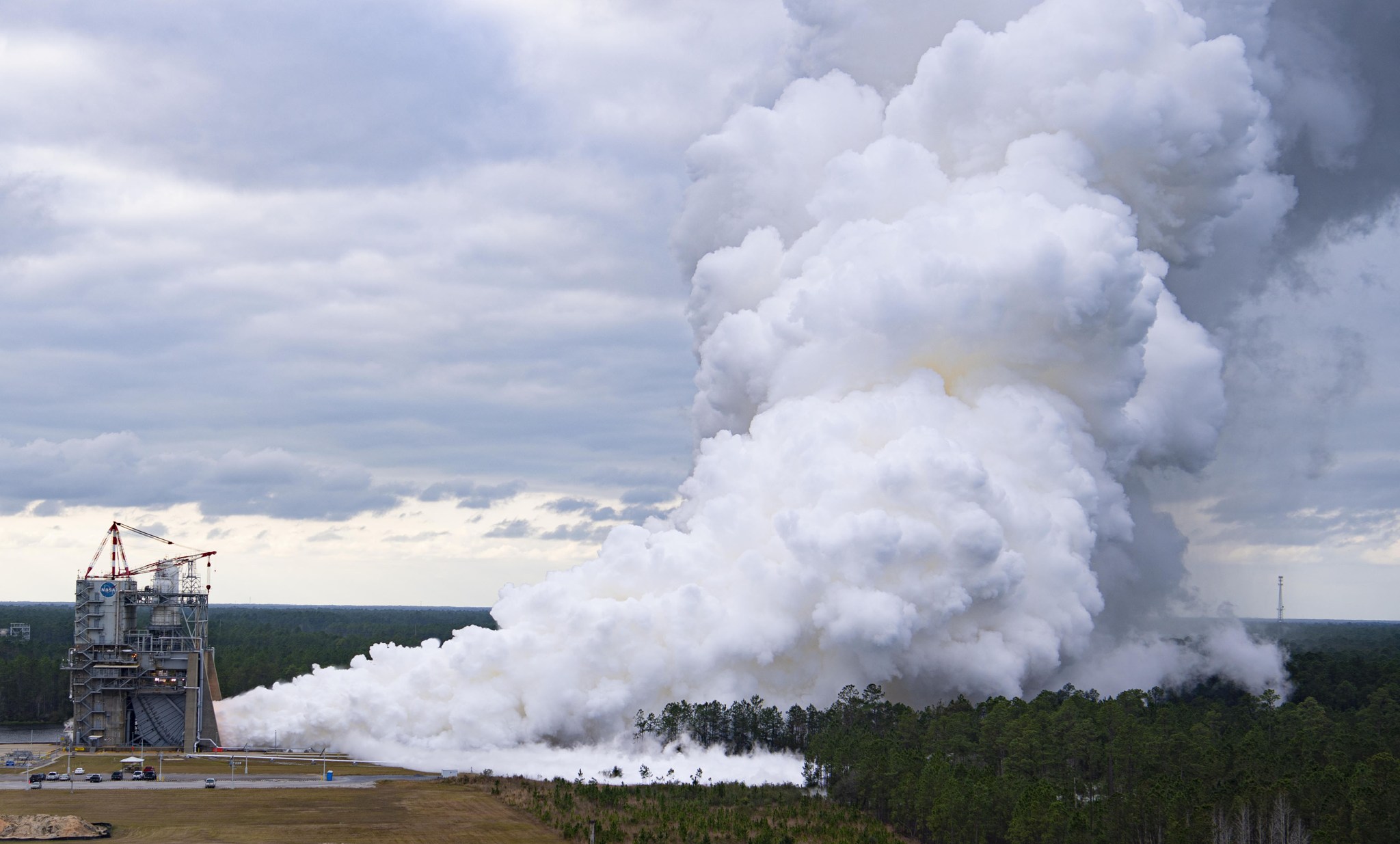Stennis Space Center near Bay St. Louis, Mississippi, recently completed a full year of propulsion testing across multiple stands, setting the stage for an equally active 2022 featuring both agency and commercial projects.

As the new year begins, seven of the nine test stands at Stennis are being used for testing. Four stands are being operated by NASA directly, one is under a Reimbursable Space Act Agreement with Aerojet Rocketdyne, and two have been turned over to Relativity Space Inc. for operation under a Commercial Space Launch Act.
“We’re looking forward to an active testing year,” said Joe Schuyler, director of the Stennis Engineering and Test Directorate. “Stennis already is on the front lines of testing to help power the nation’s deep space exploration program. In addition, more and more commercial companies are realizing the value of our unparalleled facilities, infrastructure, and test team, and bringing their test projects on site.”
The outlook for 2022 activity is a carry-over from the most recent year. In 2021, rocket engine testing at Stennis featured 11 test campaigns, including seven NASA-led projects, on eight test stands. The year’s activity totaled 434 tests and 7,341 seconds of cumulative firing time.
On the commercial front, Stennis partnered with seven companies on rocket engine and component testing projects during the recent year – Aerojet Rocketdyne, Relativity Space, Virgin Orbit, Blue Origin, Ursa Major, Launcher, and Firehawk. Aerojet Rocketdyne conducted the final scheduled RS-68 hot fire acceptance test on the B-1 Test Stand in April. However, several of the other companies are continuing testing projects into 2022. There also is the possibility of participating in partnerships with additional companies in the new year.
Meanwhile, in the most high-profile project of the year, NASA completed Green Run testing of the Space Launch System (SLS) core stage on the B-2 Test Stand in March. It followed up the yearlong testing of the core stage and its integrated systems by beginning preparations for similar Green Run testing of the new Exploration Upper Stage (EUS), being developed for use on future SLS missions.
EUS testing also will be conducted on the B-2 Test Stand. To help prepare for the future campaign, NASA has begun modification work on the B-2 Test Stand and also performed a series of subscale diffuser tests on the E-3 Test Stand in 2021. EUS preparations will continue throughout 2022.
NASA also continued testing of RS-25 engines to help power SLS on the A-1 Test Stand throughout 2021. In addition to another series of developmental tests, NASA will conduct hot fires of an RS-25 certification engine during the upcoming year. The certification series will mark a major milestone towards production of new RS-25 engines for future SLS missions.
Stennis is conducting both flight and developmental testing for the RS-25 engines that will power SLS, which is being developed for deep space exploration with the Orion spacecraft. Developmental testing at Stennis is providing critical data to Aerojet Rocketdyne, the prime contractor for the RS-25 engine, as it produces new RS-25 engines using cutting-edge manufacturing materials, processes, and technology.
The SLS is vital to NASA’s Artemis program missions to return humans, including the first woman and first person of color, to the Moon and eventual missions to Mars. In its evolved design, it will be the most powerful rocket in the world and will take astronauts farther into deep space than ever.
As part of the Artemis program, NASA is designing and building a Lunar Orbital Platform (Gateway), an in-space infrastructure needed to enable longterm exploration and development of the Moon, as well as journeys deeper into space. Gateway is designed to give NASA a strategic presence in lunar space that will drive activity with commercial and international partners to help advance exploration of the Moon.
In addition to its propulsion activity, the Stennis Autonomous Systems Laboratory (ASL) team is developing autonomous software capabilities that may be used on Gateway or other deep space habitation modules to help monitor and control critical systems. This capability is vital for mission success as communication and ground control functions take longer when exploration vehicles venture further away from Earth.
The ASL team will mark a major milestone of its own later in 2022. A project proposed by the team was one of 10 selected by NASA as part of an effort to enable new technology capabilities for deep space human exploration. Through Project Polaris, a small satellite infused with the NASA Platform for Autonomous Systems (NPAS) developed at Stennis will be deployed from the International Space Station later this year. The project will help evaluate and validate the performance of NPAS in a space environment.
Stennis is America’s largest rocket propulsion test site, with test facilities valued at more than $2 billion. Because of its surrounding 125,000-acre acoustical buffer zone, Stennis has the ability to conduct rocket engine and stage testing 24/7, 365 days a year, without disturbing neighbors. As a result, Stennis is at the front end of the critical path for the future of space exploration.
For information about NASA Stennis Space Center, visit:
C. Lacy Thompson
Stennis Space Center, Bay St. Louis, Miss.
228-363-5499
calvin.l.thompson@nasa.gov


























